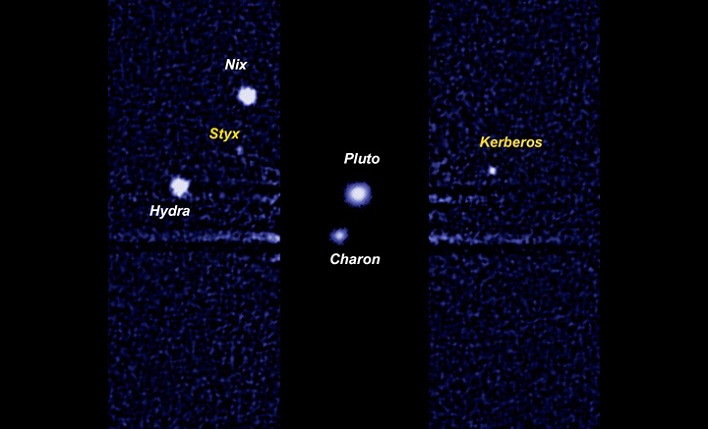New Horizons: Pluto facts and history ahead of Nasa spacecraft wake up

Nasa's New Horizons mission will begin its flyby of Pluto in January after waking up from hibernation for the last time on 6 December.
The spacecraft has so far travelled 2.9 billion miles. During its six month mission, it will collect vast amounts of data on Pluto – a planet we know very little about.
But what do we know? IBTimes UK looks at some of the facts we have established about Pluto – planet or not.
Discovery
Pluto was discovered in 1930 by US astronomer Clyde Tombaugh, a 23-year-old working at the Lowell Observatory in Arizona. The history behind the find began decades earlier, however. Percival Lowell began searching for a possible ninth planet in 1894 and dubbed it 'Planet X'. He died in 1916, having never found the elusive celestial body. The search for the planet was put on hold during a legal battle with Lowell's widow, only resuming in 1929, when Tombaugh was handed the assignment.
Tombaugh surveyed the night sky looking for any objects that had moved position. He discovered a moving object in two photographs taken in January 1930, after which the find was announced to the Harvard College Observatory.
Naming
The Lowell Observatory received over 1,000 suggestions for Pluto's name, including Atlas, Zymal, Constance and Percival. However, Pluto was chosen after being suggested by Venetia Burney, a schoolgirl from Oxford who had an avid interest in classical mythology.
Pluto was officially named on 24 March 1930 and the announcement was made the following month. The name became extremely popular very quickly, with Walt Disney choosing it as the name for Micky Mouse's dog.
Size and orbit
Pluto is the largest object in the Kuiper belt – a region of the solar system that extends beyond the planets from the orbit of Neptune. It is 1,400 miles wide – about half the width of the US and slightly smaller than the moon. It is mostly made up of rock and ice (we think).
It takes Pluto 248 years to orbit the sun and one day on Pluto is about 6.5 days on Earth. Its orbit is oval and on average it is 3.6 billion miles away from the Sun.
Moons

Pluto has five moons that we know of. The largest is Charon, which is about half the size of Pluto. Charon was discovered in 1978 and because of its size, Pluto and Charon are sometimes described as a double dwarf planet system.
Two others – Nix and Hydra – were discovered with Nasa's Hubble Telescope in 2005. They both measure less than 100 miles wide. Kerberos, the fourth moon discovered, was spotted by Hubble in 2011, while Styx was found in 2012.
What is Pluto like?
Pluto is extremely cold, with temperatures around minus 400F (-233C). Scientists think it is probably covered in ice. They also believe it has about 1/15<sup>th of the gravity of Earth.
What will New Horizons find out?
We do not know. New Horizons principal investigator Alan Stern told IBTimes UK: "This is a mission of pure discovery. No one has been to this planet, no one has been to this kind of planet, and no one has been to the Kuiper belt. Not to be over the top but this is like one of those legendary space missions from the sixties or seventies – first to Mars, first to Venus, first to Jupiter – but done with 21st century technology.
"We are expecting to discover a whole new planet so it's very hard to make predictions."
© Copyright IBTimes 2025. All rights reserved.






















